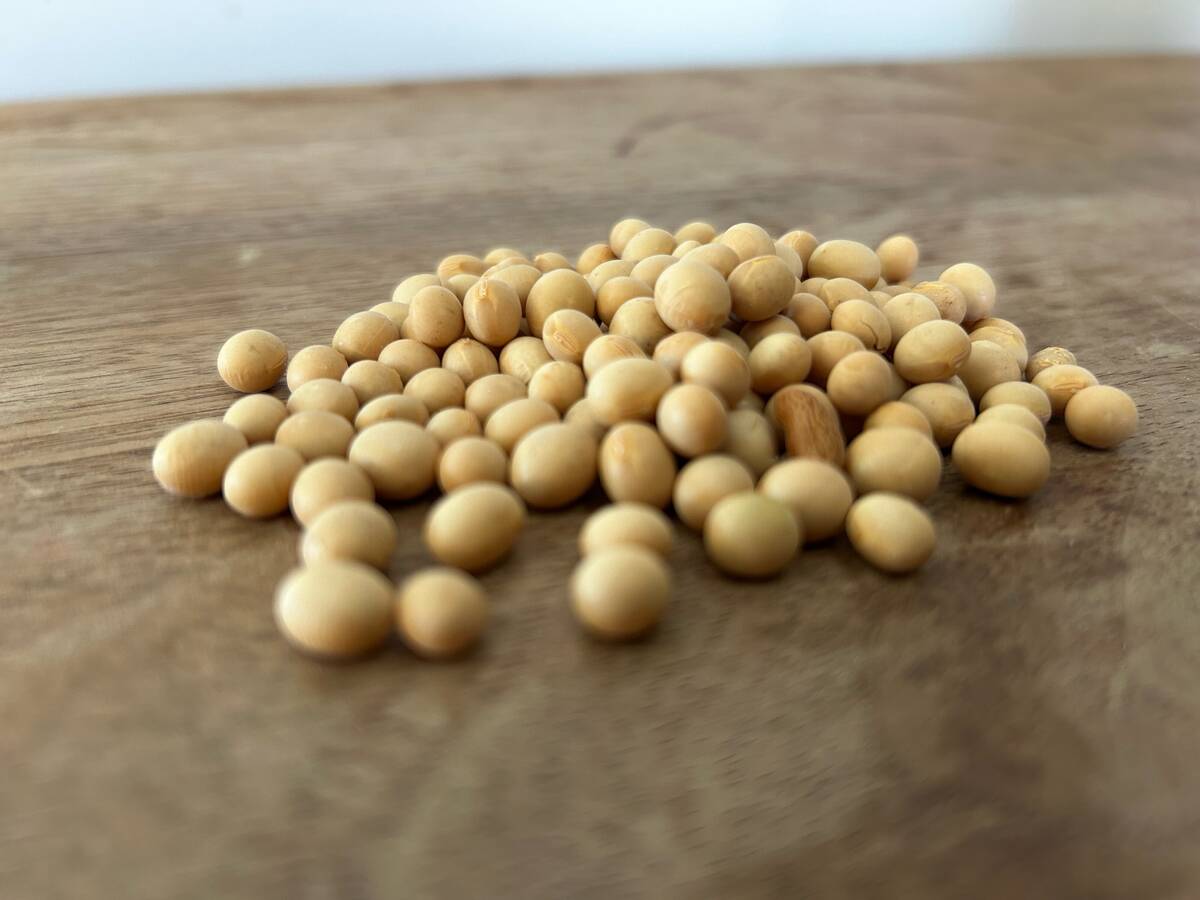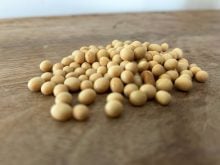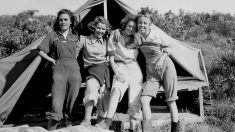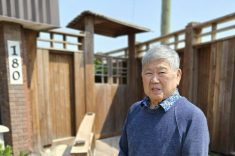BRANT, Alta. – Brandon Ball polished off two Wagyu burgers before heading off to tour the pens where the family raises cattle for their branded beef program.
“I’m spoiled by Wagyu,” he said.
His grandfather Jack Ball, a Simmental breeder became involved with bringing the Japanese cattle to Canada via the United States in 1991. The breed did not become popular but the family, that included his son Jeff and daughter-in-law Michelle persisted until they developed a branded beef program based on Wagyu cattle.
“We raise ’em and she sells ’em,” said Brandon.
Brant Lake Cattle company is a family owned and operated business where the first Wagyu herd was started in 1993. They have used fullblood Wagyu bulls since 1998 on a commercial herd of mostly red and black Angus cows.
Over time they have kept replacement females with Wagyu breeding and added them to the herd. In addition the family farms about 4,000 acres of grain and has a 15,000 head feedlot at Brant, Alta.
In the beginning the beef was used by family and friends.

The Brant Lake Wagyu beef program took off four years ago when Michelle started sending beef to a pub in Okotoks. Word of mouth among chefs piqued the interest in the highly marbled beef raised 45 minutes south of Calgary.
“Most of the restaurant chefs like the story behind it and they like that it is local. They like the idea that is a different choice to put on their menu,” she said.
She marketed it as a luxury, artisan beef to chefs who already knew what Kobe beef was. Kobe beef indicates the region where the Wagyu are raised.
“It is nice that people want a choice. They can chose natural, they can chose grassfed, a lean cut or they can chose an elite cut like Wagyu and have a good eating experience,” Michelle said.
Read Also

U.S. grains: soybeans firm ahead of USDA data
Chicago soybeans ticked up slightly on Wednesday as traders adjusted positions ahead of the release of official U.S. data on global supply and demand on Friday, the first update in weeks, but prices were capped by a lack of large Chinese purchases.
“It is good for all of us in the beef industry where we can all market our beef,” she said.
The cattle do not look like North American cattle with their smaller frames, small horns and low birthweights. However they have been developed to produce highly marbled rich tasting beef that is valued in Japanese cuisine.
The business started with four head a month processed at a local provincial packer. The business kept growing and now 30 head per month are handled at the federally inspected Canadian Premium Meats in Lacombe.
She has a federal storage facility in Calgary and an exclusive distributor to market beef across Canada. She is also considering exporting to potential customers in Dubai, Hong Kong and China. A coup was shipping Wagyu beef to Japan.
The latest success is a deal with Federated Co-ops to sell Wagyu burgers through more than 220 Co-op stores.
“Co-op approached us late last winter in January and said they wanted to do a pure Wagyu burger with their brand,” she said.
President’s Choice offers a Wagyu burger and she supplied some of the meat for that. A hot dog sold through Coco Brooks is also available.
“This is a partnership and it is exclusively Brant Lake Wagyu being used in that burger,” she said.
Working with Centennial Meats, a unique burger recipe was created to get the right flavour profile for the 75 percent lean burgers.
“That is probably the best way to have the Wagyu burger because the flavour comes through,” she said.
This program starts in the breeding pasture. Brandon takes care of the cowherd and his father Jeff runs the feedlot where the cattle go on a barley ration for up to 560 days to slowly achieve the desired market weight of about 1,600 pounds.
They gain about two pounds per day and no implants are used because they conflict with fat deposition.
They are raised with minimum stress and are raised in accordance to the Verified Beef program requirements. Individuals are tracked through a special software program.
Last fall about 770 were on feed and Michelle hopes to raise that to 1,000 this year.
They have formed partnerships with other producers to raise extra cattle.
“If you take them to the auction market you are probably not getting a premium for them. We have a branded beef program that we have built and are building on and we are interested in buying those cattle,” she said.
Carcasses are about 850 pounds and grade between 50-70 percent Prime and the remainder is AAA. Her goal is to achieve 90-100 percent Prime. The cuts will actually have far more marbling than the Canadian grades allow.
When the cattle are processed she goes to the plant and checks the carcasses and fabrication floor to maintain quality control.
“I look at the grades and the information and we trace that back to genetics and what we fed them and how we handled them.”
Animal health, daily gain and other factors like weather are regularly monitored.
“That has given us the opportunity to tweak what we do best at the best cost,” she said.
The best thing so far has been the ability to sell every cut. Chefs know what to do with the lesser known cuts and are even willing to work with products like heart, tongue and liver.
“It is not just the primals and those middle cuts that are easy to sell,” she said.
“I have been fairly fortunate with marketing. I haven’t really had to pound the pavement to find customers. They came to me,” she said.















